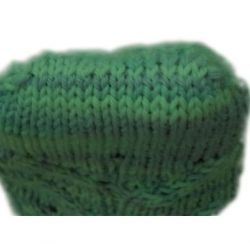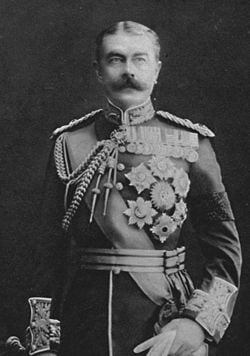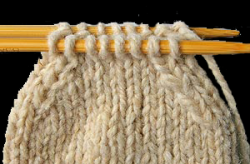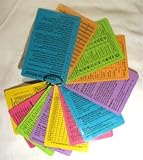- HubPages»
- Arts and Design»
- Crafts & Handiwork»
- Textiles
Kitchener Stitch

Kitchener Stitch, Weaving, Grafting?
Kitchener Stitch is a method of finishing a knitting project with an invisible seam. It uses a line of sewn stitches to join the tops of two pieces of knitting (or one piece folded in half) in a seam that exactly matches the knitted fabric.
Kitchener Stitch is also called weaving or grafting. The three terms mean the same thing.
Can you see the line of Kitchener Stitch in the photo to the right?
photo by the author
Tools for Kitchener Stitch
Kitchener Stitch is done with only a few standard items from the knitter's tool bag:
- the knitting project, on the knitting needles
- a blunt tapestry/yarn needle
- a yarn cutter or scissors
And you!
About Kitchener Stitch Tools
The tools used for Kitchener stitch are basic knitting tools. Chances are, you already have what you need. If not, the Buy links take you to Amazon to get the tools.
Did you know Amazon has an entire yarn shop's worth of yarn and equipment?

Tool #1: a Tapestry Needle
Kitchener stitch involves taking the end of yarn through your stitches. The tapestry needle holds the yarn and gives you a stiff end, perfect for poking through your sts.
Tapestry needles are long, have large eyes and a blunt point. [That means they won't split your yarn.] They come in different sizes; you'll want a large one if you work with heavier yarn (worsted weight and up). You can buy them in plastic or metal, I prefer metal.
Some tapestry needles have a curved tip. Some knitters love these ... you might want totry one.

Tool #2: a Yarn Cutter
Please, don't use your teeth to cut yarn! And while wool yarns break easily, other fibers need to be cut.
There are many different tools you can use to cut yarn: sewing scissors and thread clips; special thread clipping gadgets; even a pocket knife. Some are portable, some can be taken on an airplane.
If you like what you already own, great!
Knitting tools make great 'add ons' if you're just short of the Super Saver Free Shipping amount

Why is it Called Kitchener?
Kitchener Stitch was named after The Earl Herbert Kitchener, a well-known British military officer.
Legend says Kitchener provided a "knitting for the troops" pattern, and that is why is name came to be associated with knitting.Much knitting for soldiers was of socks, and the most common way to close a sock toe is with the technique that is also known as weaving or grafting.
Lord Kitchener was not known to knit, but was in charge of supplies, so he may have become associated with sock patterns.
Source: Wikipedia Article

How to Learn Kitchener Stitch
Kitchener Stitch is a bit tricky to do. The basic stitch consists of four very similar movements, two on the front needle and two on the back, that need to be done if the correct order. Unless you graft knitting often, it is easy to forget the exact order of the steps, so most knitters use some sort of reference every time they graft stitches.
Depending on your learning style, you can learn Kitchener stitch from books, ebooks, magazines, web sites and videos. You can also purchase reference cards with kitchener Stitch instructions. A few resources are below.
Kitchener Stitch, an Ebook by Liz Cademy - (yes, that's me)
An ebook is a great Kitchener Stitch reference. You can take it with you anywhere, and you won't have to worry about damaging a paper book. If formatted well, you can scroll to a view of the steps you need to focus on, and not worry about holding a paper book open. You can even change the font size so you can work and read at the same time!
I wrote this ebook specifically for knitters on the go.
It features very clear photographs of each step, complete with direction arrows so you know how to move your yarn needle. These photos are shown small, with summary text, so you can see several steps on one screen. The photos are also shown large, with detailed directions for each step. These instructions are great for beginners.
Finally, I've included instructions for starting and ending your weaving, plus some tips on maintaining tension.
The link to the right takes you to the Kindle version of my ebook. If you have a different reader, the ebook is available in all reader, phone, and computer formats at Smashwords.
Other Kitchener Stitch References
If ebooks aren't your thing, here are some other good Kitchener Stitch references.

Reference Cards
Several businesses make small reference cards for knitters, with information on various knitting techniques.

Books to Learn from
Just about any book on knitting socks has instructions on Kitchener stitch. Every author teaches in a slightly different way ... I like Lucy Neatby's method. And she has awesome sock patterns, too!

General Technique Books
Kitchener Stitch is also included in every general knitting technique book. Again, each author has her own style of explaining.









